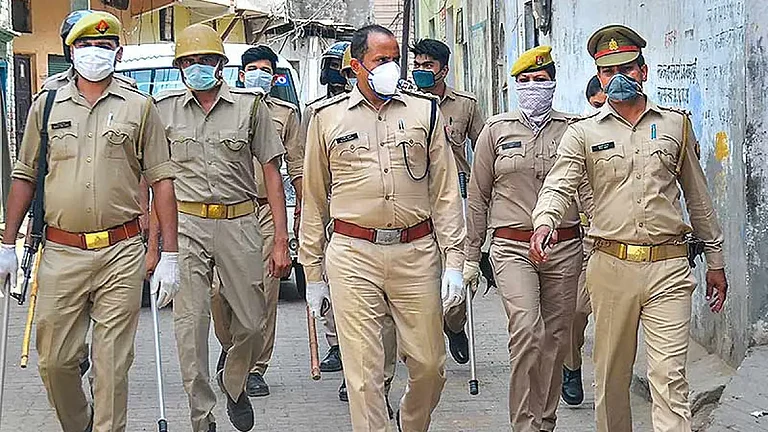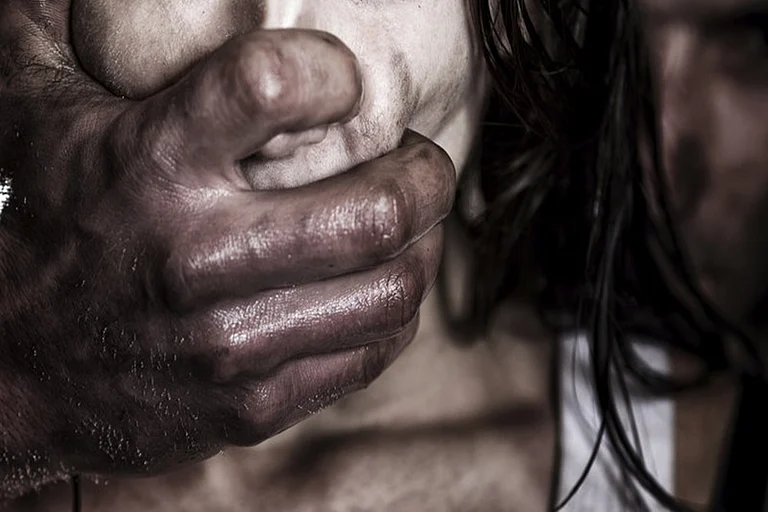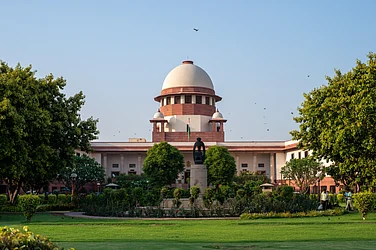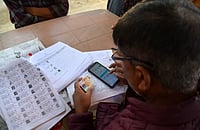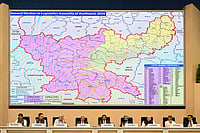Nearly 450 days have passed since 10-year-old Anita was separated from her mother. Her 12-year-old brother, Suraj, is also missing, and 7-year-old Simta, who once called Anita "didi," is nowhere to be found. The once lively home of Balram Kachchap in Barkoli, Torpa block now echoes with a profound silence.
The weight of loss and grief is palpable as one steps into Balram's residence. In a small room, the remnants of his wife Soma's life lie scattered, her bed awaiting her return. Anita tenderly handles the books and notebooks of her siblings, her tears falling onto their pages as she mourns their absence.
Anita's tearful plea is heart-wrenching: “I used to sleep with my mother. One day, I woke up and found Mummy and Simta missing. Their clothes and slippers were gone. Please bring my mother back. I dreamt she was here,” she cries.
Balram Kachchap, now 40, is growing increasingly impatient as he waits for his family to return. He recounts, “Last year, while working in Hooghly to earn money for the planting season, I learned that my wife’s aunt had taken her and our children to Delhi, lured by promises of money. Since then, I’ve been unable to contact them. Their phones are switched off.”
Though Soma called from an unknown number before Holi, promising to return afterward, that number has also been disconnected. The case remains unresolved at the Torpa Police Station, with the search ongoing for over a year.
Jharkhand faces a grim reality with thousands of human trafficking cases unresolved. In response to trafficking issues, the Jharkhand government reported in March 2015 that from 2005 to 2014, 3,839 children were trafficked from the state, with 1,281 still missing. The situation in Jharkhand, often referred to as 'Lapataganj,' reflects a dramatic increase in trafficking cases.
Recent statistics reveal that, in the past three years, 30-40 trafficking cases have been registered in Khunti, with nearly 40 girls rescued from major cities. Jharkhand has registered 134 cases under various IPC sections in just 49 days, from June to July.
A significant portion of the trafficking victims are tribal girls. The Ram Dayal Munda Tribal Welfare Research Institute reports that 90 per cent of trafficked girls from Jharkhand are tribals, often sold in cities like Delhi, Haryana, and Punjab. Khunti, with its 73 per cent tribal population, is particularly affected.
Sub-inspector Dularmani Tudu of Khunti’s Anti-Human Trafficking Unit explains the tragic cycle: trafficked girls, many taken as young as 5 or 10 years old, often return home unable to recognise their families after years of exploitation. These victims face severe physical, financial, and sexual abuse, with trafficking reaching even the most vulnerable, including newborns.
Child rights activist and secretary of Child Rights Foundation Ranchi, Baidnath Kumar claims that 30-40 lakh children from Jharkhand are working in the entire country and till now his organisation has rescued ten thousand children. Despite the return of many labourers during the lockdown, the girls and daughters of Jharkhand remain missing.
The issue of human trafficking has persisted for 23 years, failing to become a political priority due to the victims' marginalised status. Unemployment and poverty are key factors driving this crisis. Jharkhand’s unemployment rate was 59.2 per cent in May 2020, and 42.2 per cent of the population lives in poverty, according to NITI Aayog
Trafficking primarily targets larger cities, where demand for cheap labor is high. Illegal placement agencies in cities exploit legal loopholes, luring girls with false promises of employment. These agencies often exploit their victims for long hours without any compensation.
Chanda Devi, a survivor from Udikil village, recounts her harrowing experience. Lured to Delhi at age 11, she worked as a domestic helper for 10 years without receiving any payment. Her plight only ended with the help of an NGO. Chanda's story reflects a broader issue of exploitation, with traffickers often being acquaintances of victims' families.
Trafficking is seen as an organised crime, with networks operating to transport children from villages to cities. Local brokers lure children, who are then passed through various stages before being sold to placement agencies.
Jharkhand has been slow to address this issue through legislation. Although a draft Placement Agency Regulation Bill was prepared in 2016, it has yet to become law. Chhattisgarh is the only state with such a regulation.
Ravikant, a Supreme Court lawyer, emphasises the need for stricter regulation and monitoring of placement agencies to combat trafficking. While existing laws address trafficking, their implementation remains inadequate.
Jharkhand is deemed highly vulnerable to trafficking, with the UN and various organizations reporting alarmingly high numbers. Anurag Gupta, DGP of Jharkhand, notes that many cases go unreported due to the victims' lack of knowledge about local resources.
To counteract this, the CID of Jharkhand has collaborated with 30 NGOs to raise awareness and combat trafficking. From January 2017 to December 2022, 1,574 trafficking victims were identified, with 1,473 rescued and 783 traffickers arrested.
The crisis of human trafficking in Jharkhand remains a severe and persistent issue, exacerbated by poverty, unemployment, and inadequate legal frameworks. The continued struggle for justice and support highlights the urgent need for comprehensive and effective measures to protect the state's most vulnerable children and women.
(Note: All names have been changed for privacy.)
(Translation by Kaveri Mishra)









